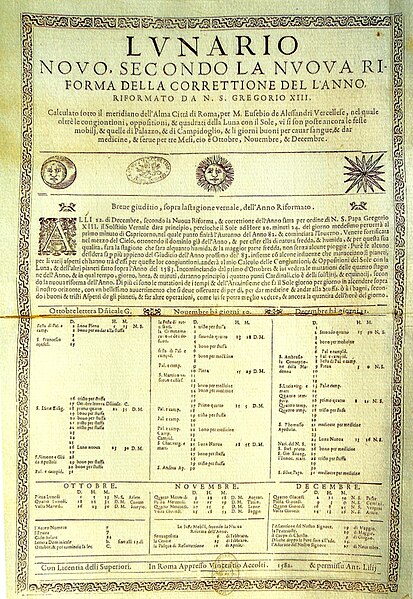2. Tilde - the squiggly line above some N's in Spanish was originally scribal shorthand used to denote the title of something, which is where it gets its name: from the Latin word titulus meaning "title"
3. Anno Domini - usually abbreviated to AD and means "in the year of the Lord" in Medieval Latin.
However, it is becoming more common to use CE, meaning "common era," in place of AD
4. Gregorian Calendar - the calendar introduced by Pope Gregory XIII in 1582 that we still use today.
One of the first printed editions of the Gregorian Calendar. Source: Wikimedia Commons

No comments:
Post a Comment